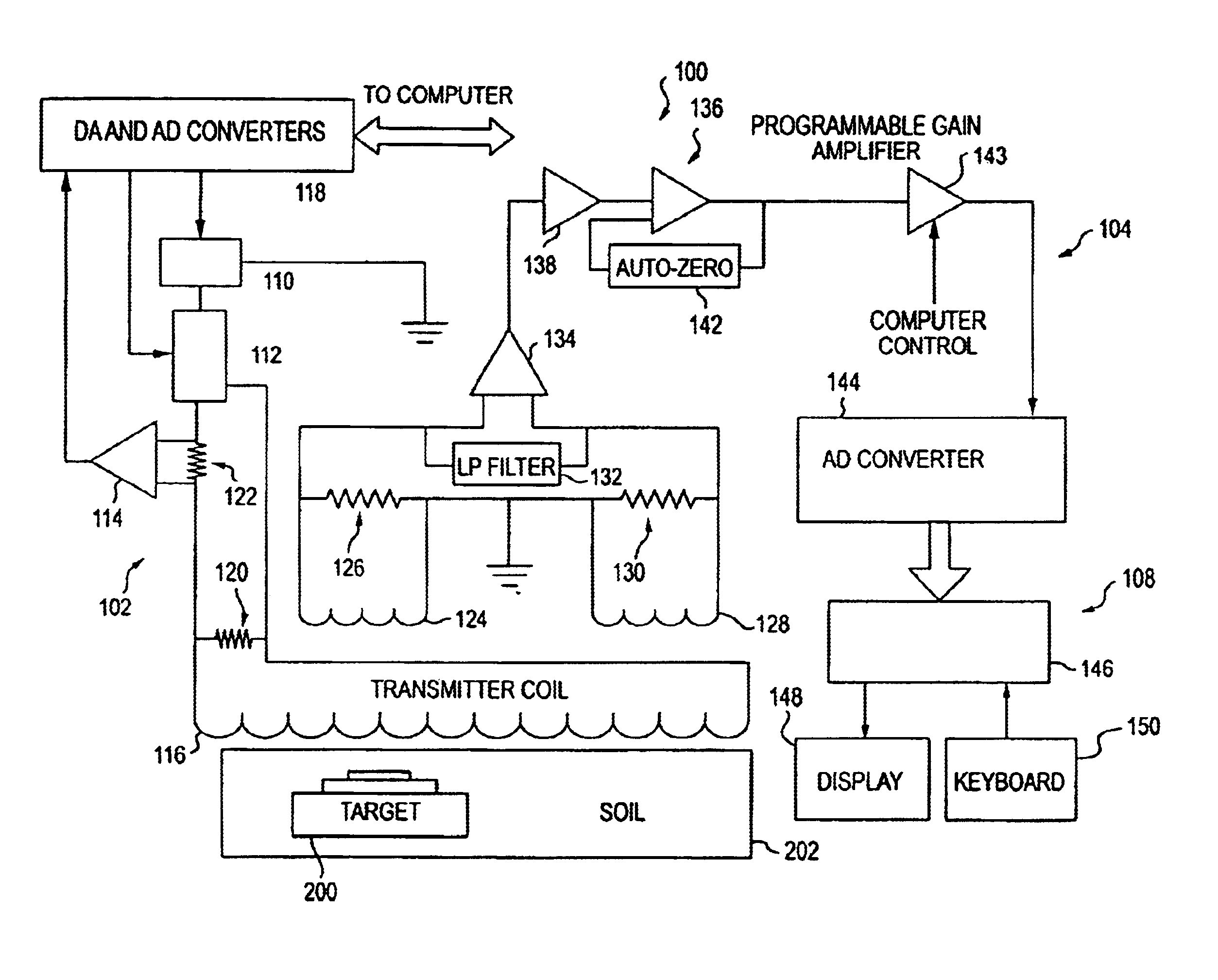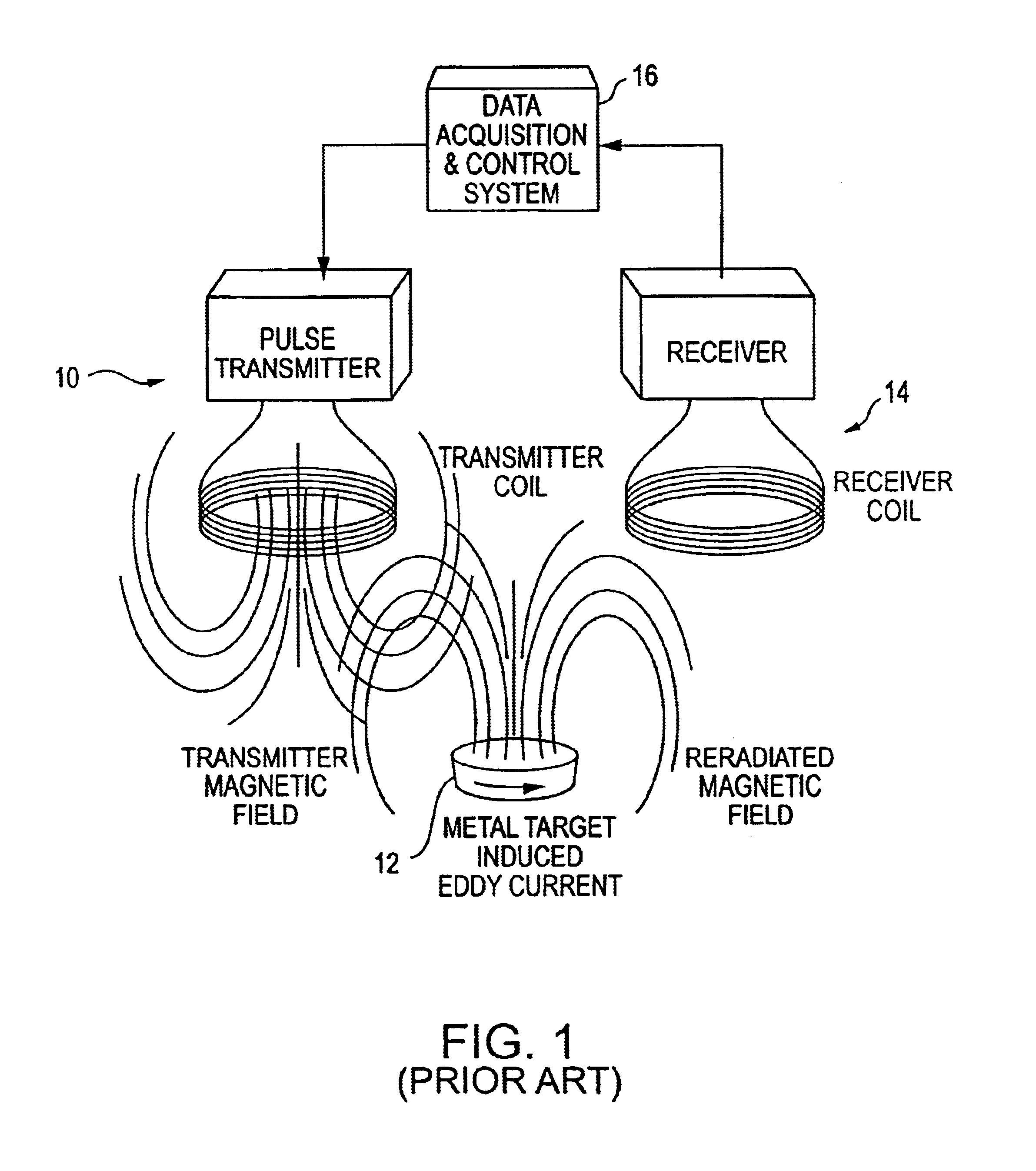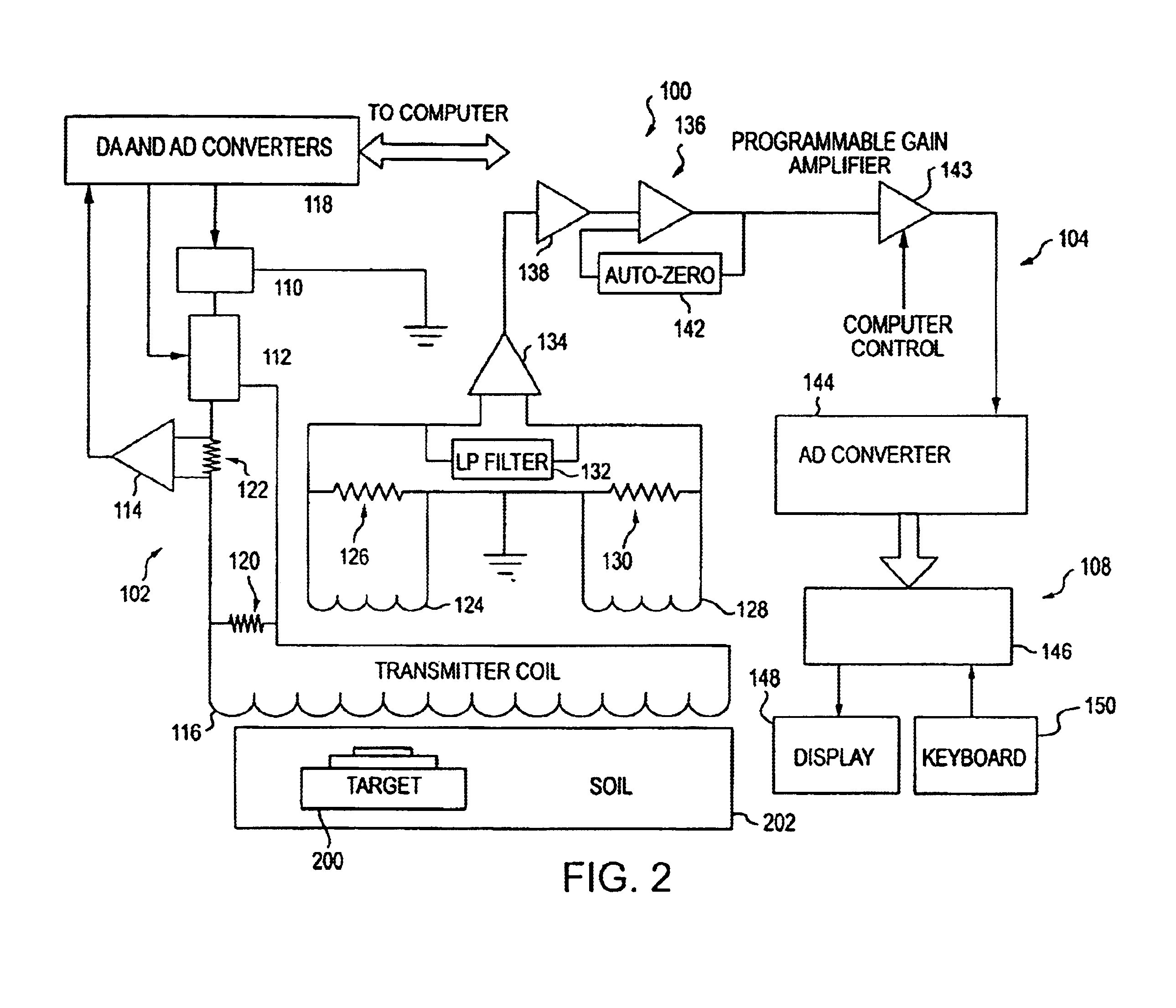Electromagnetic target discriminator sensor system and method for detecting and identifying metal targets
a technology of electromagnetic target and discriminator, which is applied in the direction of electric/magnetic detection for transportation, using reradiation, instruments, etc., can solve the problems of false alarms, clutter objects common to the environment, and non-mine objects that pose a major problem in identifying mines
- Summary
- Abstract
- Description
- Claims
- Application Information
AI Technical Summary
Benefits of technology
Problems solved by technology
Method used
Image
Examples
case 1
antenna for large and deep objects (e.g., large metal mines and UXOs) can use a large size transmitter coil with many turns. The large coil dimensions project a magnetic field deep into the ground, thus increasing the EDT sensor system's sensitivity in depth. A large number of coil turns increase the size of the magnetic field for a given transmitter coil current, thus increasing the EDT sensor system's sensitivity even further. Since the large metal targets have relatively long decay times, the EDT sensor system's time response can be made longer and still be able to measure the time decay of the object under study.
case 2
antenna for small and shallow objects (e.g., plastic landmines) can use a small size transmitter coil with many turns. The small coil dimension projects an intense magnetic field close to the antenna thus increasing the EDT sensor system's sensitivity for shallow objects. The large number of transmitter coil turns increase the size of the magnetic field for a given coil current, thus increasing the EDT sensor system's sensitivity for low metal content even further.
Case 3: The EDT sensor system 100 can be mounted on a moving vehicle. The benefits of the EDT sensor system 100 can be realized and at the same time the search rate of the antenna can be greatly improved. The advantage of the automatic noise cancellation works for removing the electrical noise of the vehicle. Also the balanced differential receiver design cancels the effect of nearby metal parts common in a vehicle.
Case 4: The EDT sensor system 100 can be configured as a barrier sensor for detection of metal objects (e.g.,...
PUM
 Login to View More
Login to View More Abstract
Description
Claims
Application Information
 Login to View More
Login to View More - R&D
- Intellectual Property
- Life Sciences
- Materials
- Tech Scout
- Unparalleled Data Quality
- Higher Quality Content
- 60% Fewer Hallucinations
Browse by: Latest US Patents, China's latest patents, Technical Efficacy Thesaurus, Application Domain, Technology Topic, Popular Technical Reports.
© 2025 PatSnap. All rights reserved.Legal|Privacy policy|Modern Slavery Act Transparency Statement|Sitemap|About US| Contact US: help@patsnap.com



